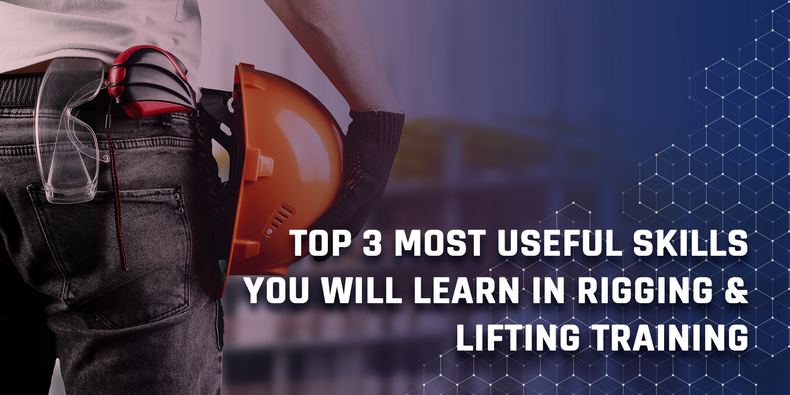Growing up, a lot of us did everything we could to avoid school work and authorities.
So you may be asking why anyone would go out of their way to seek out more school or boring job training. It seems almost masochistic, doesn’t it?
Well, if you are planning on getting into rigging and lifting operations, some formal training is going to be required of you.
If you think about it, if you are going to be using heavy machinery to lift loads that weigh thousands of pounds, it may be good to learn as much as you can about the job first.
You may be wondering just what you may be learning in Rigging and Lifting Training, so we came up with a short, very general list of the three most important things you will learn.
1. Preparing For A Lift
There’s a lot that needs to be done before you hook up a giant load to a crane. This is not a simple job and you really want to make sure that you are doing it right.
Aside from just keeping yourself and the guys and ladies on your crew, you are going to need to think about OSHA and ASME standards, assuming you want to actually keep your job.
Before every job, you are going to need to inspect your gear, your crane, your Fall Protection equipment, your hardware, and your surroundings. Sure, this all may seem like common sense stuff, but to meet those strict rules, you are going to need to know how to do it all properly.
Information On Inspections That You Will Learn:
- Inspecting Hardware For Deformities
- Methods Of Inspecting Lines, Slings, Webbing
- Checking Protective Gear For Damage & Defects
- OSHA And ASME Standards For How Often Inspections Must Occur
- What Types Of Inspections Require A Designated “Competent Person”
2. Rigging Techniques
Lifting giant loads is not magic. It’s all based on science, skills, and knowing how to use loading gear the right way.
There are a lot of different ways to lift a load. It’s important to know which methods to use in what situations, and even more importantly how to pull them off.
Sadly, none of us are born understanding mechanical advantage or the science behind using winches, rigging slings, block and tackle systems, or wire ropes. All of these techniques are going to require some learning on your part.
Rigging Techniques Taught In Trainings:
- Using Winches
- Rigging Safety
- Wire Chain Slinging
- Using Synthetic Slings
- Hardware Applications
- Block & Tackle Techniques
3. Load Control
If you talk to any guys working in construction, they will all have stories about some clown on a job site that dropped an entire load, causing huge expenses to the company, creating more work for everyone else, and putting people in dang. Don’t be that clown.
Controlling a load requires some finesse and a lot of knowledge. You will need to know how angles will impact how easy it is to move a load. You, of course, will need to know the load capacities for each piece of gear.
You are also going to need the basics of how gravity works and where to attach your hoist so you won’t be working against gravity.
Load Control Strategies:
- Using Taglines
- Proper Sling Angles
- Determining Load Capacities
- Responding To Hand Signals
- How Hitches Will Impact Load Capacity
- Balancing Loads At The Center Of Gravity
- Proper Use Of Turnbuckles For Tensioning
- Using Hoists To Create A Mechanical Advantage
Since we mentioned how each different type of hitch used will change the capacity of the load, it may be useful to talk a little about some of the hitches you will need to know about.
Some Basic Details On Types Of Hitches:
- Vertical Hitches - Lift Loads Straight Up. The Sling Will Hold The Full Weight
- Choker Hitches - Uses Sharp Bends In A Sling That Will Decrease Load Capacity
- Basket Hitches - Doubles A Load Capacity & Decreases The Strain Applied To A Sling
Final Thoughts
As you can see, there’s a lot to learn about Rigging and Lifting. Aside from just the obvious need to know how to do your job right, these types of trainings are required for you to work.
The good news is that once you get your foot in the door, management is responsible for making sure everyone is trained to do their job with the exact equipment they will be using.
Like we said before, you don’t want to be the clown on the job site who doesn’t know how to do your job right anyway.


